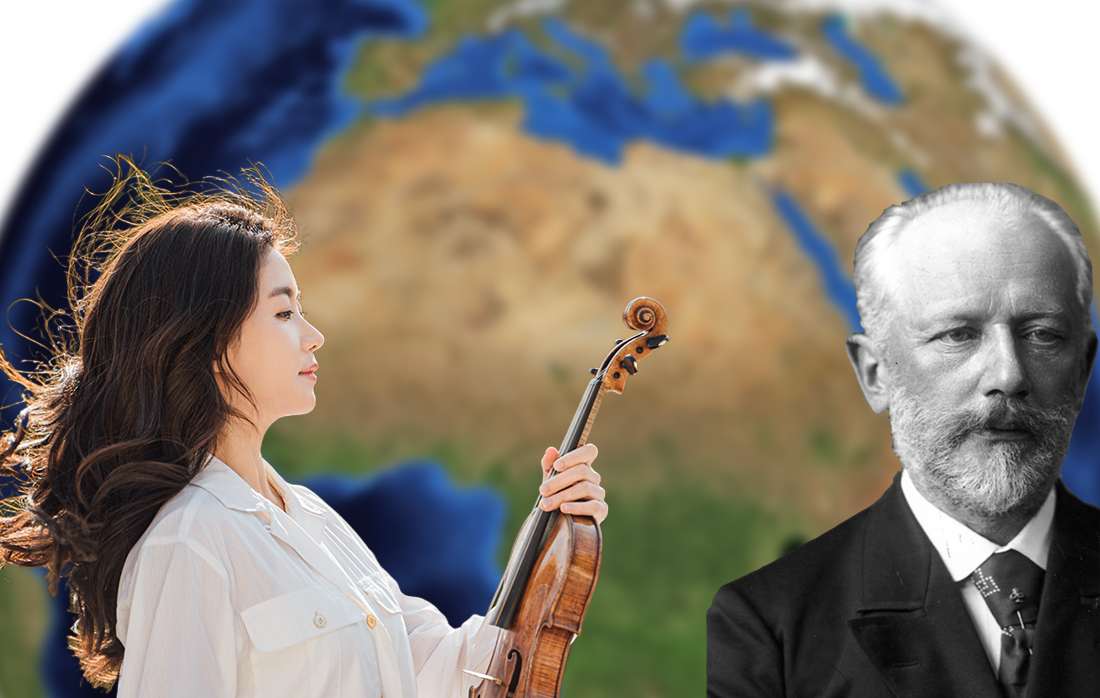Under the baton of conductor Peter Bay, the Austin Symphony inaugurated its 114th season with a controversial work by Tchaikovsky.
Upon its debut in 1881, the most influential music critic of the era lambasted the Violin Concerto in D major. Eduard Hanslick was present in Vienna that night on 4 December 1881. He wrote that “the violin was not played but beaten black and blue,” and that the piece was “long and pretentious.” He also levelled the most damning criticism of all, that it was essentially unmusical. Merging the two senses of hearing and smell, Hanslick wrote that the concerto “stinks to the ear.”
Before assessing this, one must divorce it from the artist. Soojin Han delivered an incandescent performance with a Stradivari violin from 1666. The earliest attested violin from the great master is 1665, so the instrument wielded by Han was one of his first creations. Han was the youngest grand prize winner (age 15) in the history of the Wieniawski International Violin Competition in 2001. In her hands the violin radiated an innocent exuberance despite being beaten black and blue.
The concerto became notorious even before its premiere. Tchaikovsky dedicated it to Leopold Auer, a Hungarian violinist and concertmaster of the Imperial Orchestra in St. Petersburg, Russia. The program notes tell us he considered the violin concerto “almost impossible to play,” but this is misleading. Auer later denied that he had ever used the word “unplayable,” telling the trade publication Musical Courier in 1912: “What I did say was that some of the passages were not suited to the character of the instrument, and that, however perfectly rendered, they would not sound as well as the composer had imagined. From this purely aesthetic point of view only, I found some of it impracticable.”
In this he was quite correct. While it is perfectly true that it is technically possible to play, that doesn’t mean it embodies what Tchaikovsky imagined. As the music director of the Phoenix Symphony, Michael Christie has noted, “Tchaikovsky was not a violinist.’ Specifically with regard to this violin concerto, Christie stated that the composer “would work with other people to get suggestions on how to best write for the instrument. And they were really tentative about it.” As a showcase for the undoubted talents of Han, it was a tremendous success, and she got a well-deserved standing ovation. My companion at the concert complained the concerto was too long, exactly what Hanslick said.
The concert opened with a composition from the year 2000 by Roberto Sierra. Entitled Fandangos, it was inspired by the late Baroque piece Fandango in D minor by Antonio Soler (1729-1783). The fandango was a popular dance in the 18th century and uses the same four-note bass line that is the hallmark of Flamenco music. Soler is best known for his 120 keyboard sonatas. He also wrote six quintets for organ and strings, concertos for two organs, solo works for organ, over 300 vocal works, and a treatise on modulation. Sierra writes that “some of the oddities in the harmonic structure of the Soler piece provided a bridge for the incorporation of contemporary sonorities, opening windows to apparently alien sound worlds.” For music nerds who enjoy connexions with Texas, I recommend reading an online 2008 doctoral dissertation about Antonio Soler; it was written at the University of North Texas by Fernand Vera, now a professor of music at Collin County Community College in Denton.
In his introduction to Fandangos, Bay told the audience that “we sometimes go into the 21st century and morph back to the 18th century.” That is indeed the case. The piece is at times spacey, at times rollicking, and at times a whirlwind, all leading to a rousing finale to the sound of castanets. The second half of the concert was dominated by Maurice Ravel. We hear first The Jester’s Song of Dawn (1905), followed by La Valse (1920). As the name implies the first piece evokes dawn, and in this composition Ravel brings to music what painters term chiaroscuro: the treatment of light and shade. For Ravel, this was a form of morning serenade from the Basque region of Spain, and even for those who have never been there, the feeling is palpable. What we hear now is a 1918 orchestration of just the fourth of five piano pieces he composed in 1905. La Valse evoked for me something far different than Ravel intended, which was a gigantic hall of dancers under the glow of chandeliers. It brought to my mind a water ballet dream sequence from an Esther Williams film. However it struck the audience at the Long Center, it was much appreciated and provided a fine conclusion to the first concert of the 2024-2025 season.
